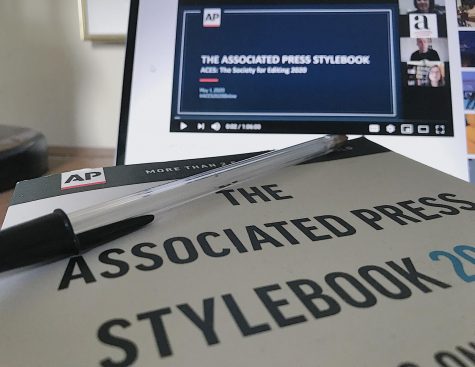Read at the Bone: Jacqueline Woodson’s “Red At The Bone”

Pictured: the cover of "Red At The Bone." (Courtesy of Facebook)
April 15, 2020
Beautifully written and rapidly-paced, Jacqueline Woodson’s “Red at the Bone” delivers an insightful look into the history of two African American families.
The book begins in 2001, at Melody’s coming-of-age ceremony in her family’s brownstone in Brooklyn. Prince plays in the background, her mother’s dress is draped around her and excitement seems to be drifting through the house. When Melody asks about the history of her mother’s dress, a tragically beautiful history unwinds before her, making the novel a reminder of how the past infiltrates the present.
Several winding stories about Melody’s family members slowly bubble up in conversation like surprising yet delicious desserts, with some sweet and some sour. These interlocking stories drive Melody’s narrative and, at a time when she is figuring out her future, remind her of the unceasing past that will dictate her actions. While exploring the past, Woodson is not afraid to scrutinize her characters before the reader, rendering the audience almost speechless with the critical eye of her prose.
As the reader dives into three generations of family history with Woodson, it is clear that the author does not want a sprawling epic but instead favors a quick explosion of emotion. Even with such quickness and emotion, Woodson is easy to navigate.
The novel has the same effect on readers as a series of linked short stories; however, the beauty of “Red at the Bone” is its fascination with the contemporary. Instead of exploring outside of the bodies and worlds we know, Woodson looks inward, reading down to the bone.
This type of examination of the American family is reminiscent of Ann Patchett, with sprawling family drama that slowly unwinds before the reader, explaining a dilemma that seems to loom over the novel.
However, when compared to Patchett, Woodson’s novel tackles race and gender in ways that Patchett’s novels have not yet achieved.
Race and gender remain at the forefront of the novel. As readers follow Melody through her family’s history, they are confronted with the history of America — and the implications of that past on ourselves. In a way, this novel dissects bodies (particularly the American public and our individual bodies) by forcing readers to examine the core — or bone — of the issues in our public bodies.
While as beautiful and profound as this dissection of American culture is, the novel’s less than 200 pages make the story seem rushed. The beautiful images Woodson articulates rush past the reader, leaving a desire for more than is not fully satisfied by the end.
While this pacing may serve a purpose in illustrating the abruptness of the future and the finite nature of time, it does not always leave room to make the reader fully immersed in Melody’s world. While this may also be intentional to show the inability to truly access family histories, it does not always complement the experience of the reader.
Overall, “Red at the Bone” is a beautiful and short novel. Although it may not be the most sprawling, beautifully-crafted journey through family histories in contemporary America, it asks important questions about American culture and is very entertaining in the process.
If you’re looking for a copy of “Red at the Bone,” make sure to shop local and support your local bookseller online. Additionally, this novel also makes a phenomenal audiobook, which can be found on Audible.









If you want a picture to show with your comment, go get a gravatar.